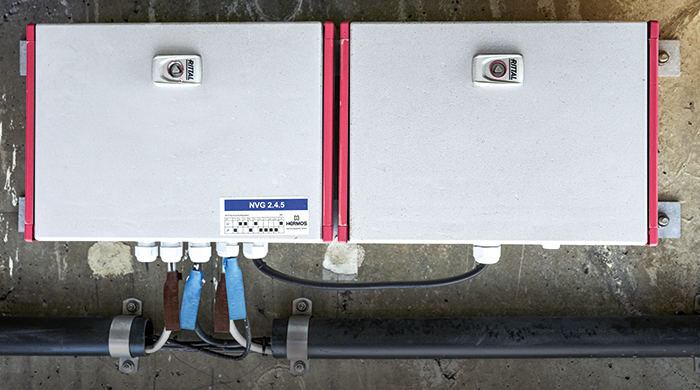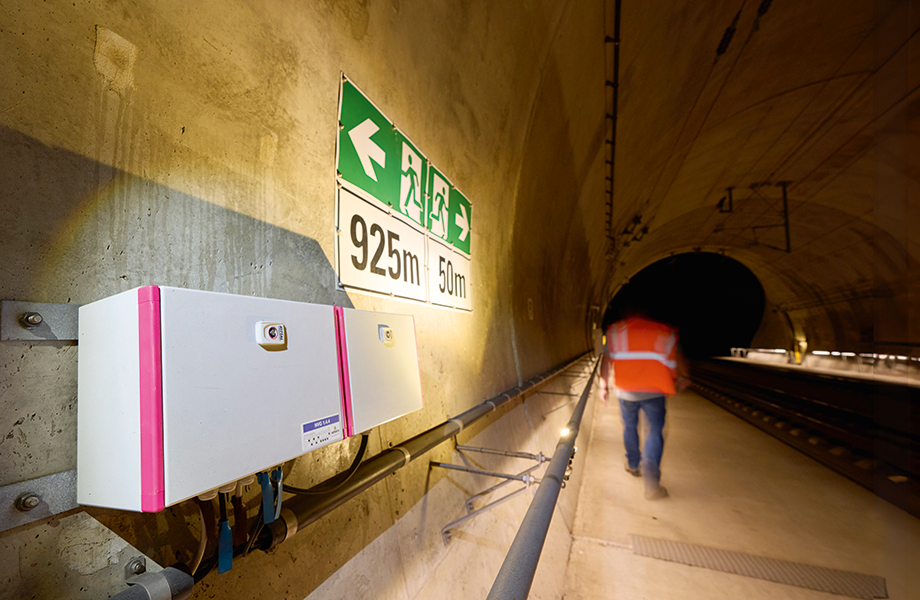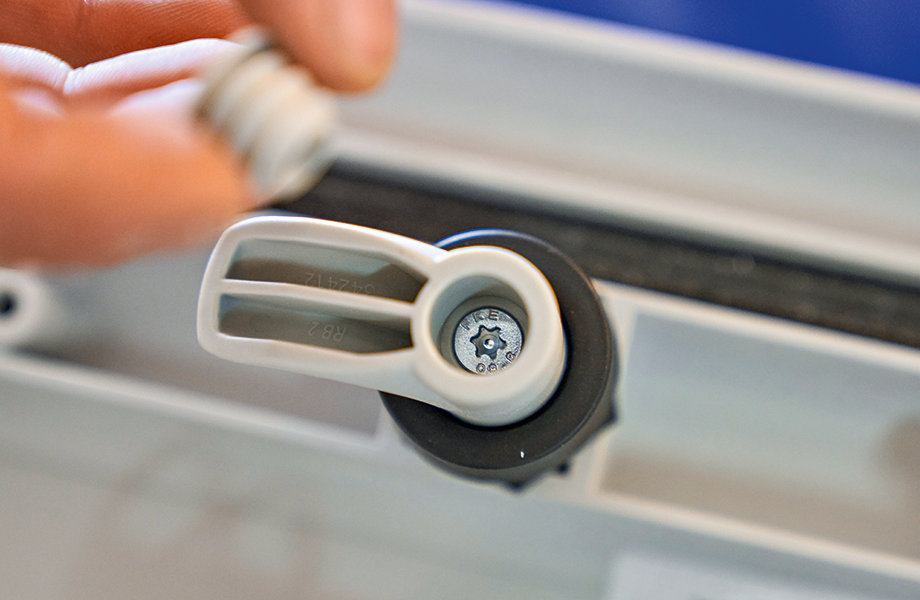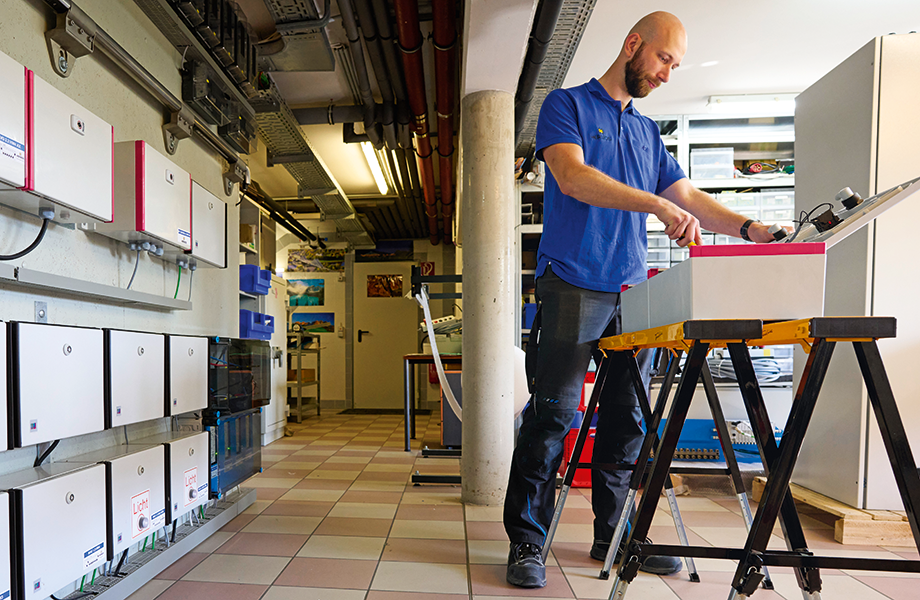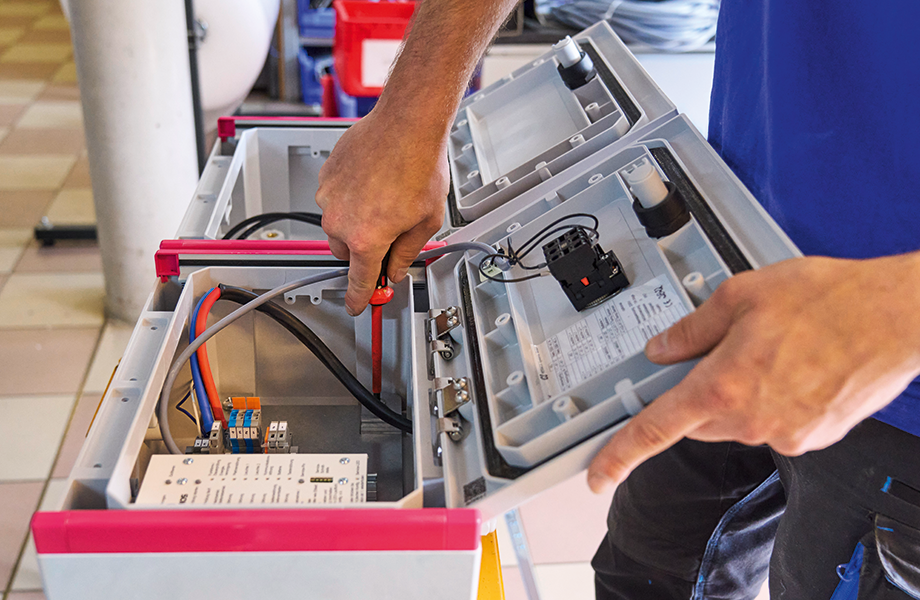Passengers have been gazing out of the train window as they speed past picturesque landscapes. Suddenly, everything goes black. It’s a tunnel, but not quite as dark as they think – thanks to HERMOS Systems GmbH. This company is responsible for much of the safety lighting in the tunnels of Deutsche Bahn’s rail network in Germany. “We have now installed around 25,000 enclosures in Deutsche Bahn tunnels,” reveals Veit Demel, Managing Director of HERMOS Systems GmbH, giving an indication of the scale of the task. “They are fitted in pairs to create an emergency lighting power supply unit,” he adds. Battery-powered emergency lighting systems are installed in the tunnels in sections 16 metres long. Every power supply unit is connected to two sections and, if the power fails, will therefore light up 32 metres of tunnel so that escaping passengers and rescue teams can find their way. One enclosure houses the battery, while the other accommodates the electronics that continuously monitor and control the power supply units. Up to six of these emergency light power supply units are connected via a tunnel power distributor to a master cable. HERMOS uses Rittal AX standard enclosures to house these and other distributors. “As we see it, the enclosures need to meet two key requirements,” explains HERMOS Authorised Representative and Project Leader Robert Berndt. “Firstly, they must be robust and certified as complying with the provisions stipulated by the customer. And secondly, they must be available over a period of many years, because any change to our products – such as a new enclosure model – entails a lengthy and costly recertification process by Germany’s Federal Railway Authority,” he continues.
The magazine of Friedhelm Loh Group
The magazine of Friedhelm Loh Group
